First Place
MXene Library
Michael Ghidiu, MSE, Drexel University
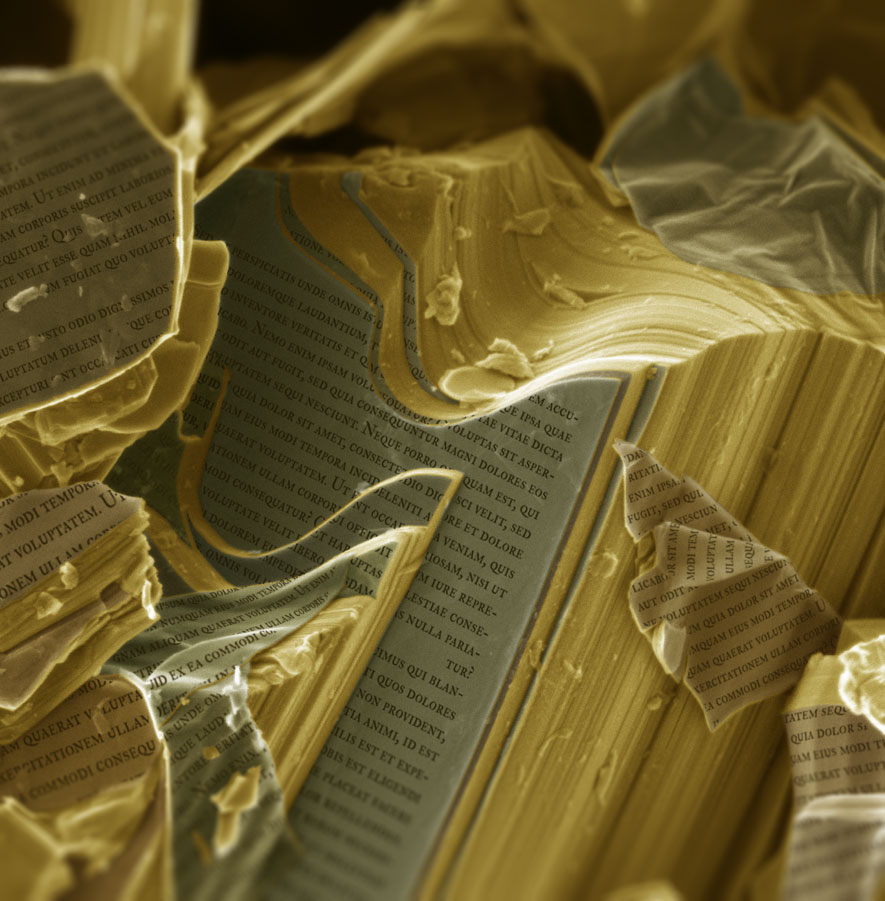
MXene Ti3C2 ‘clay’ has a layered structure that can be easily sheared, creating fantastic forms on the microscale. This is an SEM image of Ti3C2 stacks that have been partially sheared along the basal planes, giving the appearance of books, and has been colorized to emphasize the likeness.
Second Place
Ariana Levitt, MSE, Drexel University
Piezoelectric Nanoyarn Galaxy
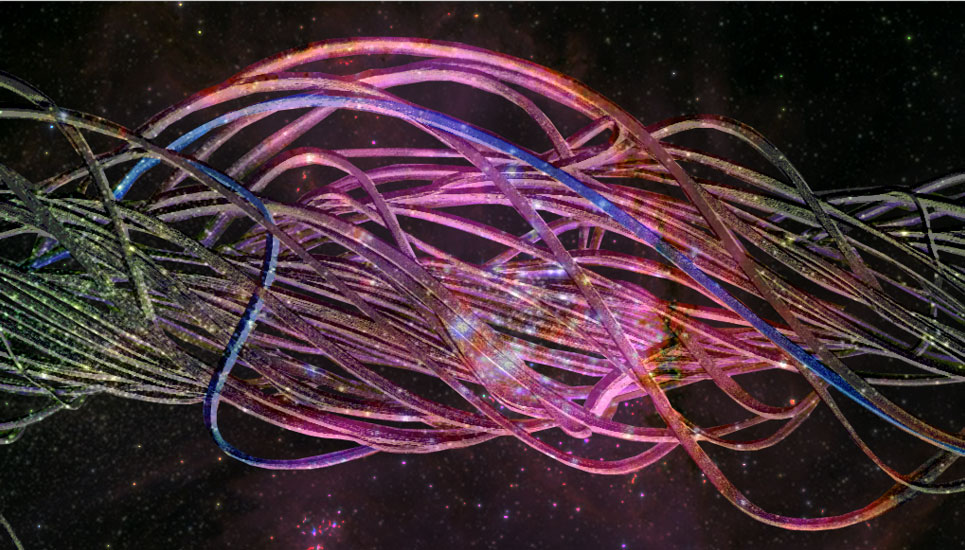
An electrospun PVDF-TrFe nanoyarn. PVDF-TrFe is a polymer capable of forming piezoelectric nanofibers without the need for additional poling. Nanoyarns are higher-order architectures of nanofìbers and are fabricated by twisting bundles of aligned nanofibers together during the electrospinning process.
Third Place
Richardo Tranquilin, Federal University of Sao Carlos, Brazil
Gerbera Flower
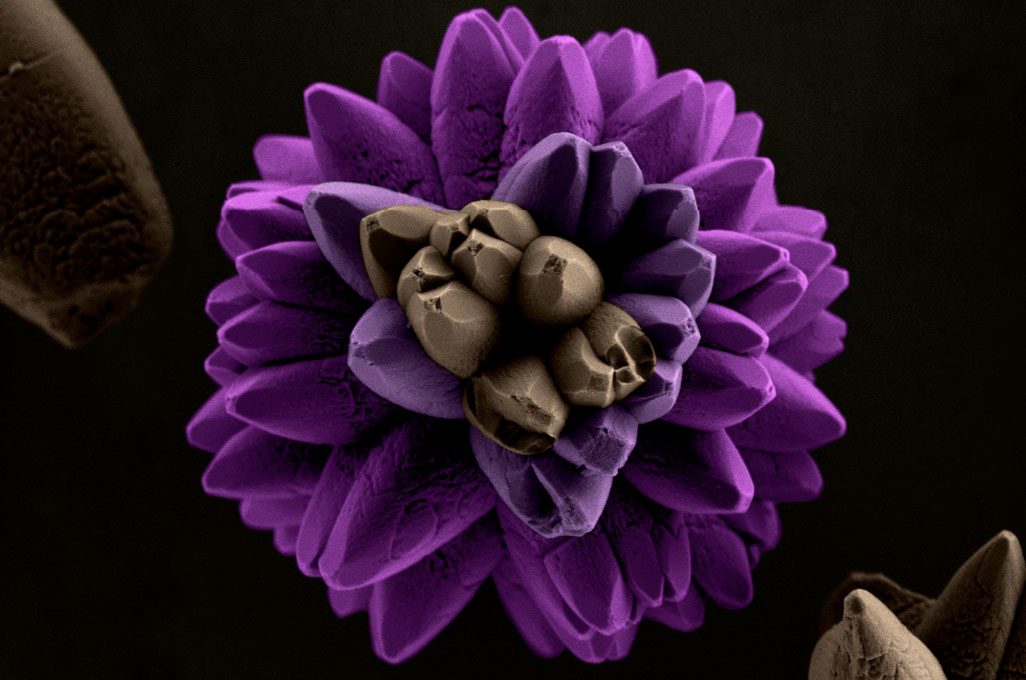
The general idea of this work is the association of nature with microscopic images, both in their shapes and colors, so it is possible to converge the microscopic world to the common world, where so we can show that this small world works with the same forms of the macro world. Also taking a special look on the images that exhibit abstract forms. The image was obtained through Field Emission Gun – Scanning Electron Microscope (FEG – SEM). The material presented in this image is strontium tungstate.
People’s Choice
Kanit Hantanasirisakul, MSE, Drexel University
Ti3CN Antelope Canyon
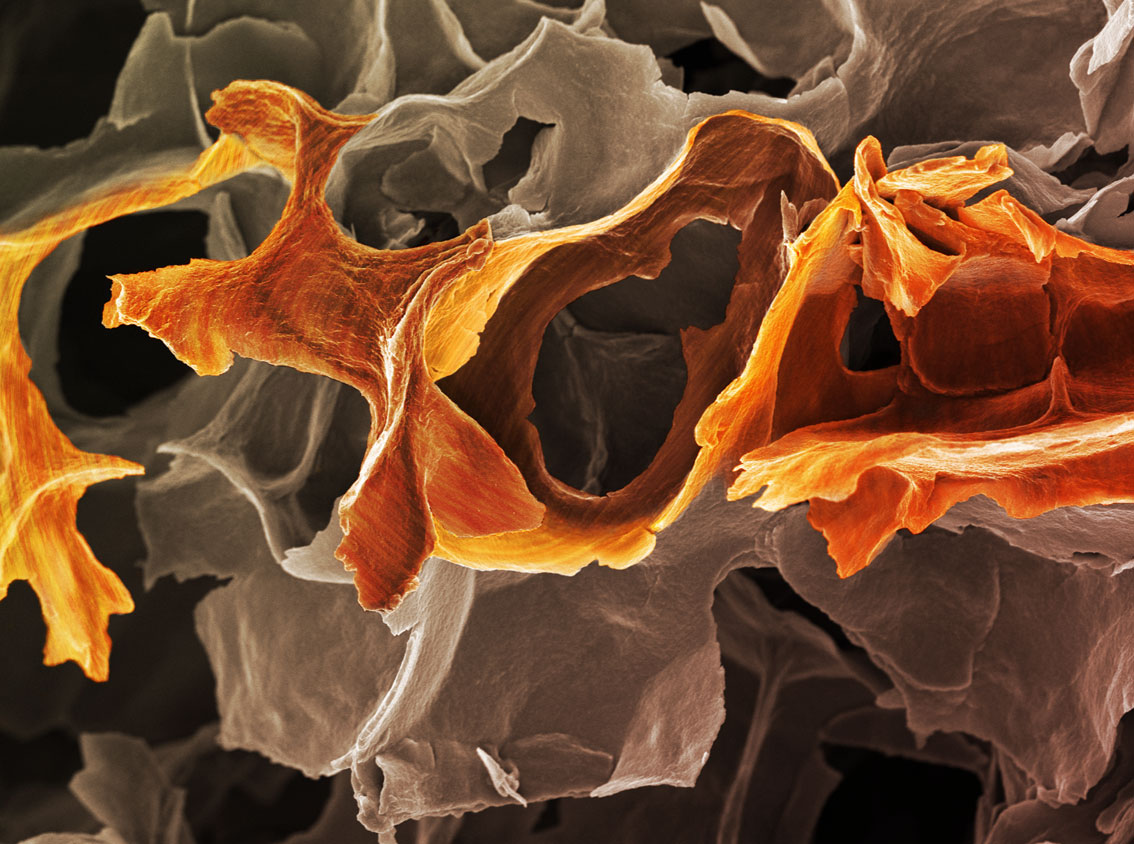
The curved structure presented in the picture is a porous Ti3CN Mxene. The width of the “cliff” on the right hand side of the picture is approximately 20 microns. The author tries to match the MXene microporous structure with the Antelope canyon in Nevada. MXene and antelope do have something in common in the sense that they are made from soil (clay for MXene).
Honorable Mention
Laura Riccardi, Istituto Italiano di Tecnologia in Genova, Italy
NanoHyperspace

Molecular dynamics simulations of monolayer protected gold nanoparticles in water. To avoid boundary conditions artifacts the system is replicated in all three directions of space, mimicking an infinite system. The foruth dimension is time. Molecular dynamics simulations allow to follow the dynamical evolution of the system, typically in the nanosecond to microsecond time scale.
Gabriel Burks, MSE, Drexel University
Gasp!!! Fall is Here, but Winter is Near
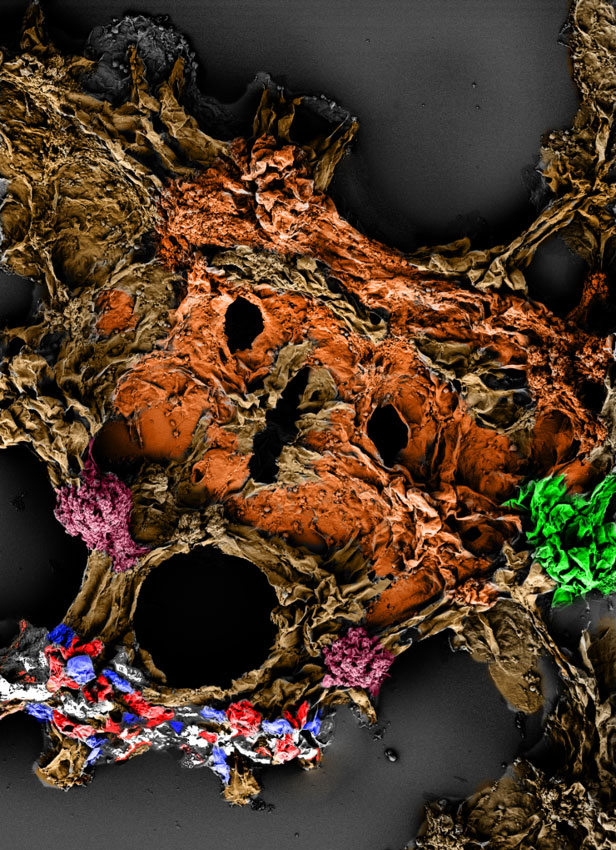
This image is dedicated to the millennials, who find themselves at the crossroads of constant change. Society is in perpetual motion it is to our advantage to be prepared to adapt to these changes. The scarecrow gasps at the sight of yet another predicted change upon the horizon, but it also knows that its place in the field is crucial for the eventual success of the crop (especially in the midst of the changing environment. So to the millennials, be strong in your values, flexible in your ways, and never-ending in your pursuits. Fall is here, but we all know that winter is near!
Scientifically speaking, this image is one of colorized Poly(vinylidene fluoride) PVDF crystallites viewed under scanning electron microscope.
Yuriy Smolin, CBE, Drexel University
Polyaniline blueberries on carbon nanofibers twigs
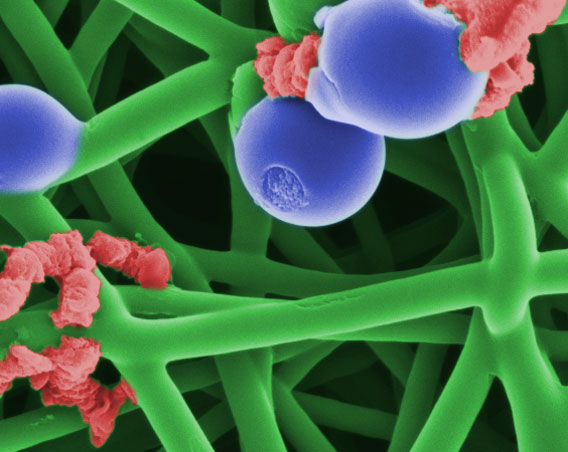
Electrospun carbon nanofibers are coated with a 10nm polyaniline coating using oxidative chemical vapor deposition (CVD). During this specific reaction, spheres of polyaniline formed on the surface of the carbon nanofibers, along with some rough patches. The spheres reminded me of blueberries and the rough patches reminded of insects that craw on twigs such as red caterpillars, and the nanofibers reminded me of green twigs. So I made this image to reflect this natural scene in my mind.